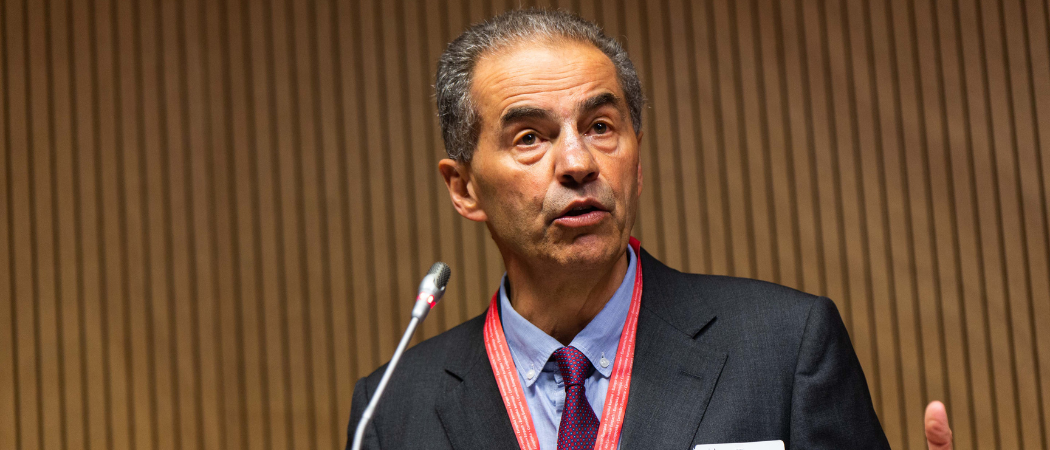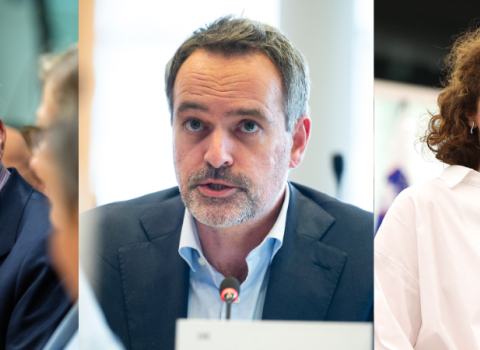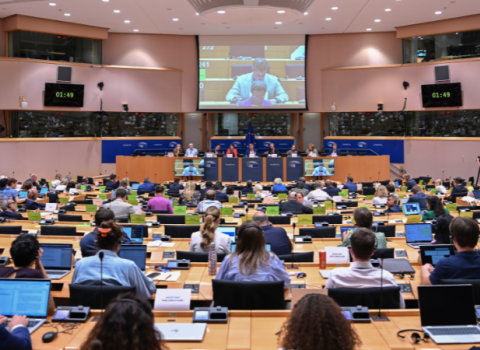Stakeholders are wary of links with the Competitiveness Fund as they prepare to negotiate the details of the new research programme

Portugal’s former science minister Manuel Heitor. Photo credits: Bogdan Hoyaux / European Union
The EU research bubble is carefully scrutinising the details of the new Horizon Europe programme, set out in a draft proposal leaked to Brussels offices on Monday night, in preparation for a months-long negotiation process.
Manuel Heitor, Portugal’s former science minister who led the expert group advising the European Commission on the structure of the next research programme, FP10, says the proposal is “quite far away” from what his group proposed. He hopes to see it improve in the coming months as governments and the European Parliament put flesh on the bones of the Commission proposal.
“We know that the details are very important, [but] in this moment, we don’t know the details,” Heitor told Science|Business, before adding that “there are a number of good signs and questions.”
Heitor hopes this process will bring the proposal closer to his expert group’s vision for FP10. One of its key suggestions had been to introduce an independent governance structure to Horizon Europe’s Pillar 2, which funds collaborative research. This would allow researchers, innovators and other stakeholders to dictate priorities.
Instead, the Commission proposes to link Pillar 2 with the new European Competitiveness Fund (ECF). But Heitor warns that using the ECF steering mechanism to influence Pillar 2 programming may undermine the independence of collaborative research.
He hopes Horizon’s independence and a researcher-led governance framework will be introduced during the negotiations. “[The proposal is] a starting point, as always, as every seven years. We have a complex decision-making process,” he said. “The initial draft is always a very initial draft. You see Horizon Europe now is very different from the initial draft.”
Plus, a lot will depend on the Multiannual Financial Framework (MFF) proposal the Commission is set to publish on July 16, alongside the official proposal for FP10 legislation. The MFF will determine the budget and ambition of the new research programme.
Jan Palmowski, secretary general of the Guild of European Research-Intensive Universities, was cautious about jumping to conclusions based on a draft, especially one without budget figures. “[The budget] will be the litmus test of how the EU values a future based on research and innovation and competitiveness,” he said.
Universities come to Pillar 2 defence
The research community is happy to see an independent EU research programme preserved in the leaked draft FP10 proposal, but is sounding alarm bells over its close links with the ECF.
Kurt Deketelaere, secretary general of the League of European Research-Intensive Universities, said the proposal was much better than the Brussels rumour mill had predicted, with some suggesting chunks of the research programme would be fully integrated into the ECF.
The good news in this respect is that FP10 will retain its own legal base as well as a strong focus on bottom-up fundamental research, under its crown-jewel programmes the European Research Council and Marie Skłodowska-Curie Actions (MSCA).
However, like Heitor, universities and research organisations are cautious about FP10’s close links with the ECF. The extent of these links remains unclear, largely due to the “horribly written regulation on ECF,” as Deketelaere put it.
Mattias Björnmalm, secretary general of the Cesaer university association, welcomed the proposal as “a solid starting point,” but is similarly worried about a shared rule book for FP10 and the ECF, especially one based on the new fund rather than Horizon’s trusted rules.
”It would be far more logical for the ECF to follow Horizon Europe’s established rule book, refined over four decades, rather than the other way around,” he said.
The European University Association (EUA) pointed to the regulation’s emphasis on technology scale-up and market deployment, suggesting this focus may be detrimental to basic research in the revamped Pillar 2 for collaborative projects.
Collaborative research “should not be limited to projects close to the market,” said Kamila Kozirog, the association’s deputy director for research and innovation. “Compared to its predecessor, FP10 seems more clearly positioned as a tool to serve broader political and strategic objectives.”
Joep Roet, deputy director at the Netherlands House for Education and Research, also warned against the Commission’s obsession with the pipeline from research to innovation, reflected in the draft proposal. He is worried that this may create projects that fully rely on EU funding and keep absorbing limited funds, producing a kind of EU halo effect.
Echoing Heitor’s concerns over the governance of the fund, Roet called on research ministries to ensure they are part of the decision-making process. “It’s key we get the governance of the ECF right, with the Commission, member states and the involvement of science and industrial stakeholders,” he said.
Moonshots? Missions?
While there is plenty to be happy about in the proposed structure for FP10, the draft plan lacks detail and has left many open questions about the future of the programme.
For one, the plan mentions nine examples of “moonshots” that FP10 may finance, including investing in CERN’s Future Circular Collider project, developing clean aviation and quantum computing.
These proposed moonshots have raised eyebrows. The regulation does not specify how they will be different from the contentious research Missions, which were framed as moonshot programmes in the present Horizon Europe, nor does it detail how they will be integrated into the programme.
“We would really need to ensure that the research and innovation financing of these moonshots funds genuinely excellence-based research and innovation,” said Palmowski.
Björnmalm suggests that to finance nine ambitious moonshots the EU would need to double at least the Horizon Europe budget to €200 billion. “We want to avoid the impression that we promise a forest and then only provide resources for a single tree,” he said.
Separately, many also warn that while the continuation of the MSCA research training programme in Horizon is great news, the phrasing of the proposal leaves the scheme open to the introduction of top-down, policy-driven calls. Universities have repeatedly warned this would undermine MSCA’s bottom-up nature, which has made it a success.
Other worries include lump-sum funding becoming the default mode of financing and unclear rules for dual-use projects in Horizon.
For Heitor, the lack of ambition in creating novel, experimental funding models is a missed opportunity. This is an area in which the EU is lagging behind its competitors. Heitor’s expert group had advised the Commission to create a dedicated unit for exploring and testing new approaches to financing science.
“There are good experiences over the last year in Europe, like Sprind in Germany and the metascience unit in the UK. There are interesting experiments that show we need to improve,” said Heitor.





 A unique international forum for public research organisations and companies to connect their external engagement with strategic interests around their R&D system.
A unique international forum for public research organisations and companies to connect their external engagement with strategic interests around their R&D system.